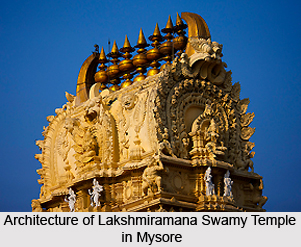 Lakshmiramana Swamy Temple in Mysore, situated in Karnataka. Lakshmiramana Swamy Temple is one of the temples of tourist attractions in Mysore.
Lakshmiramana Swamy Temple in Mysore, situated in Karnataka. Lakshmiramana Swamy Temple is one of the temples of tourist attractions in Mysore.
Lakshmiramana Swamy Temple is one of the oldest temples in Mysore along with its archeological significance. Lakshmiramana Swamy Temple is visited by many tourists from all over India and abroad.
Lakshmiramana Swamy Temple was renovated by the Maharaja of Mysore, Krishnaraja Wodeyor III. Thus the statue of the King of Mysore is erected within the temple.
Lakshmiramana Swamy Temple is dedicated to Nambinarayan, an incarnation of Lord Vishnu. Lord Vishnu is main image of worshipped deity of Lakshmiramana Swamy Temple. The deity is kept in the sanctum sanctorum of the temple and cell beside the deity is a magnificent idol of Goddess Laxmi.
A beautiful statue of Lord Vishnu is also there in the Lakshmiramana Swamy Temple. Behind the main temple of Lakshmiramana Swamy, there is the wonderfully constructed Mandapa. It was built by Kantiva Narasaraja Wodeyor during the 17th century.
This article is a stub. You can enrich by adding more information to it. Send your Write Up to content@indianetzone.com





















